When I wrote about using our dinghy motor to putt-putt along when both our diesel and the wind died (December 2014), I got a couple of questions about how we did it.
There are two possible techniques:
- Previously have installed an outboard bracket on the boat for use in an emergency; or
- Side-tie the dinghy to the “big boat”
Which one works best and how fast you can move depends on your boat and the outboard. Our 6HP moved our lightweight Gemini catamaran (with a very clean bottom) at 2.5 knots in flat water. I’ve seen a 15 HP move a heavy 45-foot monohull at one knot. You’re not going to go long distances this way, but it can get you into a harbor or marina.
Outboard Bracket
A previous owner had put an emergency outboard bracket on the stern of our port hull. Dinghy motors generally aren’t long shaft, so an outboard bracket won’t work on many boats as there’s no way to mount a bracket low enough that the prop will be in the water.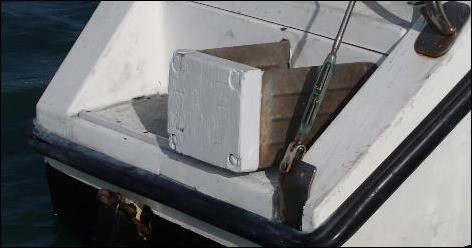
You also have to consider whether you’ll physically be able to move the motor to the bracket position from wherever it’s typically stored . . . without dropping it in the water or wrenching your back. And you’ll need to be able to get to the motor to start it, put it in/out of gear and set the throttle. You do NOT need to be able to steer from the location (see details below on using it).
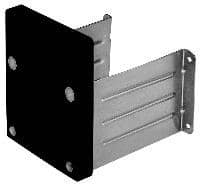 Consequently, an outboard bracket works best with smaller outboards or where you have a motor crane in just the right place. Our 4-stroke 6HP motor was about the largest Dave and I could have manhandled without a crane – and that was in glassy flat seas.
Consequently, an outboard bracket works best with smaller outboards or where you have a motor crane in just the right place. Our 4-stroke 6HP motor was about the largest Dave and I could have manhandled without a crane – and that was in glassy flat seas.
IF you’ve got a spot that will work, you can use a simple bracket such as these from Garelick (see photo; link is to Amazon which has a better price than any marine store). On ours, the heavy plastic mounting board was replaced with a shorter thick piece of wood – shorter so that the prop would reach the water. NOTE: with the 6 HP at about half throttle, this bracket started vibrating some.
A larger motor would need a beefier bracket – different ones are rated for different size engines. Also some will allow you to put the motor on the bracket and then lower it into a position closer to the water (they are actually designed for racing boats to get the prop – and its drag – out of the water when racing). I don’t like to cut out marine retailers, but Amazon has most models for about 15% less than even the discount marine stores – see one here and search for others.
Make sure that the bracket is very securely mounted on the boat. It should be through-bolted with hefty backing plates and sealant.
You’ll also need to have a secure place for the gas tank that’s close enough for the hose to connect. We tied ours to the radar pole.
IMPORTANT SAFETY NOTE: If you have a propane refrigerator, like ours, and it’s lit, be very careful with where you place the gas tank and where you refill it.
Side-Tying the Dinghy
For most boats, side-tying the dinghy works better. It’s exactly what it sounds like – tying the dinghy to the side of the boat and using the dinghy’s motor to propel the big boat. We had to do this twice with our Tayana 37 and it worked better than I expected.
Unfortunately, I don’t have any photos, but you’ll need several strong lines – one going from an aft cleat on the big boat to the dinghy, one from somewhere slightly further forward on the big boat to the dink, and one from slightly forward of the dinghy to the bow of the dinghy. Exactly how you tie up is different with every boat/dinghy combination, so it may take a few tries before you discover the optimum setup.
For most boats, it works best if the dinghy is just slightly aft of the center of the big boat. Don’t try to steer with the dinghy – use the big boat’s rudder. It works MUCH more effectively. Simply set the dinghy motor straight ahead. If there are enough people aboard, it’s good to have one ride in the dinghy to slow down and put the motor in neutral when needed.
If you have to really nudge the big boat into a slip or travel lift basin, it’s usually easier to untie the dinghy (and maybe solicit help from another dinghy or two) and use it/them as little tugboats to push the boat into position.
Technique
With either an outboard bracket or side-tying the dinghy, it’s best to have the outboard pointed straight ahead and steer from the big boat. Since the motor almost certainly won’t be in the exact center (side-to-side) of the big boat, you’ll have to compensate in your steering – but that is generally much better than having the outboard slightly turned to try to make up for being off-center.
It’s generally best to run at half to three-quarters throttle. It’s hard on outboards to run full throttle under a heavy load for long periods of time, and pushing the big boat is definitely a heavy load. This also gives you a little in reserve in case you get caught in a current or a cross wind.
Don’t expect to stop the big boat by throwing the dinghy into reverse. Instead, plan for the big boat to simply coast to a stop. Get a feel for how far it coasts and handles in a cross wind BEFORE you come into a tight anchorage.
Admittedly, you’re not going to go hundreds of miles this way, and you’ll do better if you have a 15 HP outboard on your dinghy than if it’s a 2 HP. But we’ve gone 5 to 10 miles four times that I can remember. And that can be enough to get you to a safe place.

Quickly find anchorages, services, bridges, and more with our topic-focused, easy-to-use waterproof guides. Covering the ICW, Bahamas, Florida, and Chesapeake.
Explore All Guides

Carolyn Shearlock has lived aboard full-time for 17 years, splitting her time between a Tayana 37 monohull and a Gemini 105 catamaran. She’s cruised over 14,000 miles, from Pacific Mexico and Central America to Florida and the Bahamas, gaining firsthand experience with the joys and challenges of life on the water.
Through The Boat Galley, Carolyn has helped thousands of people explore, prepare for, and enjoy life afloat. She shares her expertise as an instructor at Cruisers University, in leading boating publications, and through her bestselling book, The Boat Galley Cookbook. She is passionate about helping others embark on their liveaboard journey—making life on the water simpler, safer, and more enjoyable.
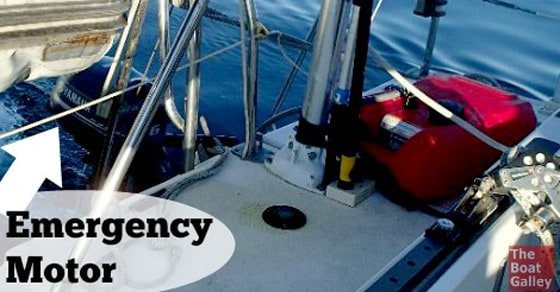



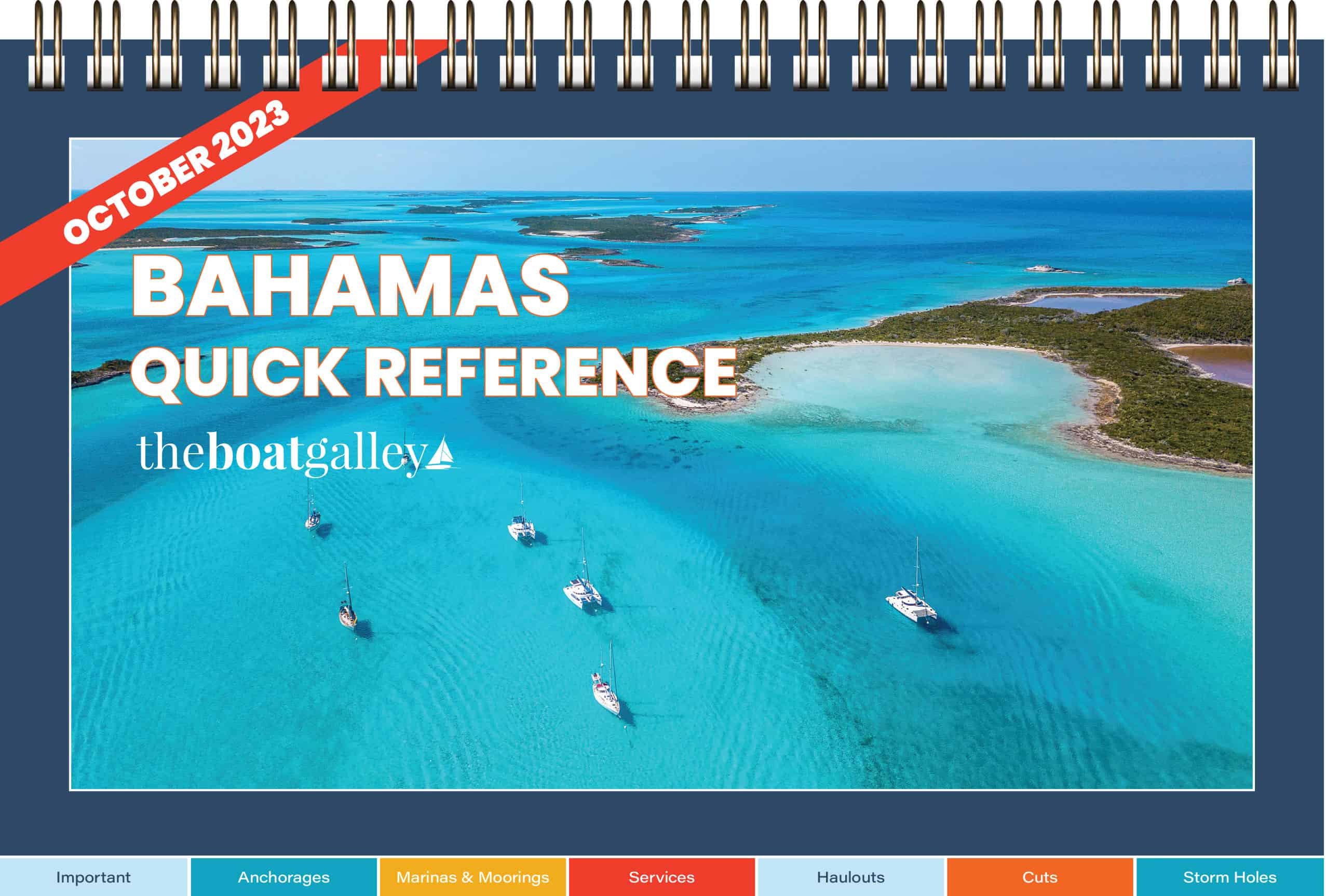




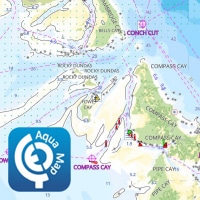

Muzaffer Namoglu says
It is very very important….
Ann Snider says
We have side-tied the dinghy to our 42 foot Catalina when our engine quit one time. We had just been to Mystic Seaport on that cruise and they had an exhibit on tug boats and so we knew the best way to move along the big boat was to side-tie the dinghy. We were definitely able to move more than 1 knot with a 15 horse (the sailboat weighs almost 10 tons empty and we were just returning from a 2.4 week cruise so we were pretty heavy) and it worked great to get us into our home harbor and to our mooring. 🙂
Yorgos Dumas says
Ha, i did this too!
Lupari Sue says
Saved our bacon on more than 1 occasion. Glad we had the skills to do it.:-)
Jim Shell says
This is a technique that should be in the “in case of emergency book” on all cruising boats. As stated, this is not normally used for moving the boat hundreds of miles, but for getting a few miles or so to your slip (our case) or an area to get help. We found that we needed someone at the dinghy motor to assist steering because the mother vessel had poor steerage at very slow speeds.
The Windjammer fleet in Maine uses this “yawl boat” technique on several of the large passenger schooners as primary propulsion.
Lynne Bumpass says
Thanks Carol.
Dave Skolnick (S/V Auspicious) says
Good article Carolyn.
Side-tied dinghies work wonderfully. As you say the key is to use the boat rudder to steer.
Tying up the dinghy is important. Carolyn’s description is proper but more detail might be helpful. Here are my thoughts. You’ll want breast lines from the dinghy to the big boat to keep it close and a spring line or two to take the drive force.
The biggest issue is usually hooking to the dinghy.
On my boat (an HR 40) and dinghy (Caribe L9) I run a breast line from the inboard dinghy transom lift ring to the stern cleat. Another breast line runs from the dinghy bow ring to the nearest stanchion. I run a spring line from the inside dinghy bow ring to the boat stern cleat. I also run a line from the bow ring to the midship boat cleat so there is a force line if I need to reverse the dinghy.
Carolyn is absolutely correct about trying to stop the boat by reversing the dinghy – it won’t work effectively. Big boats have more inertia than most people think. The good news is, that as Carolyn says, if you have two people you will have plenty of time to drop the dinghy and use it as a tug as the boat drifts in.
Bill J says
We have done this for over 1000 miles of sailing/motoring.
TIP : put the fuel tank on deck for easy refilling, much easier than trying to refill in dink whilst running.
Brian M says
I have used the dingy outboard for something slightly different. When the main engine alternator quit I fashioned an extension cable from the dingy outboard (which has electric start and a very small alternator) to our main battery bank so we could run navigation lights and the VHF. Worked like a charm and made me think about putting something more permanent in place so that I could plug the dingy into the “mother ship”.
Carolyn Shearlock says
Interesting idea. Good thought in an emergency.
Ann Snider says
A few years ago, we had done our 3 week cruise which included a stop at Mystic Seaport, CT. where they had a tug boat exhibit and we were able to do a hands-on exhibit showing which was a better way to tow – pull, push or hip tie. So when we were almost home in our own harbor and went to turn on the engine and it wouldn’t start, we knew just what to do! This is my then 11 year old son in the dinghy with a 15 hp. engine propelling our Catalina 42. We were able to go about 4 knots, if I remember correctly. Sorry about the video – apparently my daughter felt climbing all over the boat while filming was a good idea! LOL https://youtu.be/d-NTyFh0xSs
Jan Bogart says
been there…m
Theresa Williams Hudson says
Ronald Hudson lol
Anne Ellingsen says
We have used the method of tying our dinghy alongside our 38′ sailboat to get us back into the Marina when our diesel failed. Fortunately the Marina staff were available to catch lines for us & get us tied up.
CJ Grabenstein says
Do you have cleats in the dinghy you can tie ropes from main ship on? We have used our dinghy to help us get unstuck from running aground but don’t have any serious tie off points.
John Fox says
Thanks for posting this. My wife and I chartered a captained sail in Hawaii several years ago, just a ‘three-hour cruise’ in Waikiki. No storms, but the engine wouldn’t start on the way in. The boat owner had mounted his outboard on a pivoting mount that made it accessible from the stern of the boat for moving to and from the dingy, and he was also able to drop it down into the water.
He had obviously used this technique before because, as you noted, you can’t stop a multi-ton sailboat with a dinghy motor. As we entered the marina, he put the motor in idle pretty darn far from his slip and had this sly little grin on his face like ‘you won’t believe this’. We coasted in fast enough we needed some help stopping her.
That’s one of the things on my ‘to buy list’. I appreciate the other options you shared for mounting since they look a tad bit cheaper.
Sailing Uma has used the dinghy technique, and one of their recent videos has some pretty good info on that.